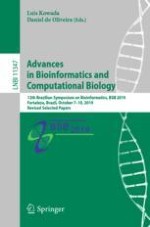2020 | OriginalPaper | Buchkapitel
Predicting Cancer Patients’ Survival Using Random Forests
verfasst von : Camila Takemoto Bertolini, Saul de Castro Leite, Fernanda Nascimento Almeida
Erschienen in: Advances in Bioinformatics and Computational Biology
Aktivieren Sie unsere intelligente Suche, um passende Fachinhalte oder Patente zu finden.
Wählen Sie Textabschnitte aus um mit Künstlicher Intelligenz passenden Patente zu finden. powered by
Markieren Sie Textabschnitte, um KI-gestützt weitere passende Inhalte zu finden. powered by
